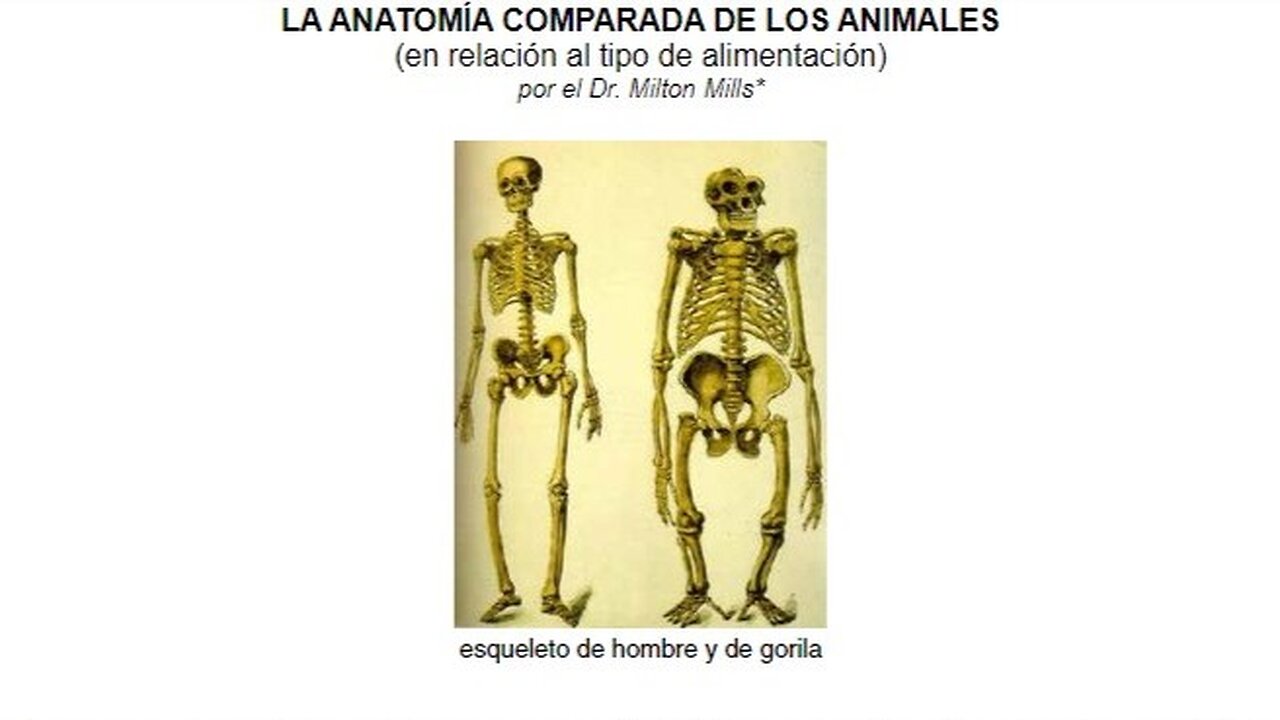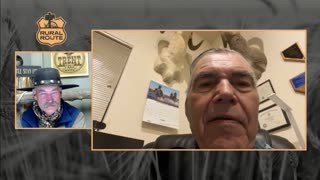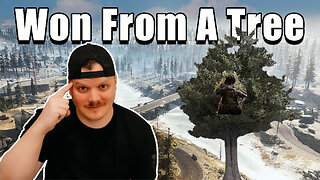Premium Only Content

THE COMPARATIVE ANATOMY OF ANIMALS
THE COMPARATIVE ANATOMY OF ANIMALS
(in relation to the type of food), by Dr. Milton Mills.
Humans are commonly described as "omnivores." This classification is based on the observation that humans generally eat a wide variety of plant and animal foods. However, culture, custom, and learning are confusing the understanding of human nutrition.
Carnivores have a wide mouth opening relative to their head size. This provides obvious advantages for developing the strength needed to grasp, kill, and dismember their prey.
The most prominent adaptation to a herbivorous diet in bears (and other "anatomical" omnivores) is the modification of their dentition. Bears retain the incisors, large canines, and premolars of carnivores; but their molars have been adjusted with rounded cusps for crushing and grinding.
What are we?
The human gastrointestinal tract exhibits anatomical modifications consistent with a...
...herbivorous diet.
Human teeth are also similar to those found in other herbivores except for the canines (the fangs of some of the monkeys are elongated and are thought to be used for display and/or defense).
Humans have muscular lips and a small oral cavity opening. Many of the so-called "muscles of speech" are actually the muscles used in mastication.
Eating quickly, trying to swallow a large amount of food, or swallowing foods that are difficult to digest and/or poorly chewed (meat is the most common culprit) can often cause a person to choke.
The characteristic "square jaw" of adult males reflects the enlarged angular process of the mandible and the developed masseter and pterygoid muscle group.
The human colon displays the saculated (bulky) structure characteristic of herbivores. The cross-section of the large intestine is larger than that of the small intestine.
In conclusion, we see that humans have the gastrointestinal tract structure of an herbivore. Humans do not display the mixed structures one would expect to find in an anatomical omnivore, such as bears and raccoons.
-
 2:02:10
2:02:10
BEK TV
3 days agoTrent Loos in the Morning - 9/29/2025
11.8K3 -
 18:09
18:09
Forrest Galante
12 hours agoI Survived 24 Hours In The World's Deadliest Jungle
49.4K13 -
 25:31
25:31
MattMorseTV
17 hours ago $28.25 earned🔴We just got THE MOTIVE.🔴
57.8K196 -
 15:49
15:49
Nikko Ortiz
21 hours agoI Have A Gun
46.9K21 -
 15:51
15:51
GritsGG
18 hours agoWinning a Warzone Match From a Tree! #1 Player's POV!
32.9K3 -
 2:31:01
2:31:01
The Connect: With Johnny Mitchell
1 day ago $43.23 earned"It's About To Get Worse"- CIA Agent Andrew Bustamante Explains Why It's Time To Leave America
72.5K88 -
 16:21
16:21
The Pascal Show
1 day ago $5.07 earned'THE FEDS MADE THIS UP!' Candace Owens Drops BOMBSHELL Pushing Back On Details In Charlie Kirk Case
35.2K38 -
 LIVE
LIVE
Lofi Girl
2 years agoSynthwave Radio 🌌 - beats to chill/game to
239 watching -
 25:39
25:39
DeVory Darkins
16 hours ago $23.91 earnedMass shooting erupts in Michigan as bombshell study shows left wing political violence skyrocketed
71.2K143 -
 5:55:33
5:55:33
MattMorseTV
15 hours ago $137.89 earned🔴Portland ANTIFA vs. ICE.🔴
196K411